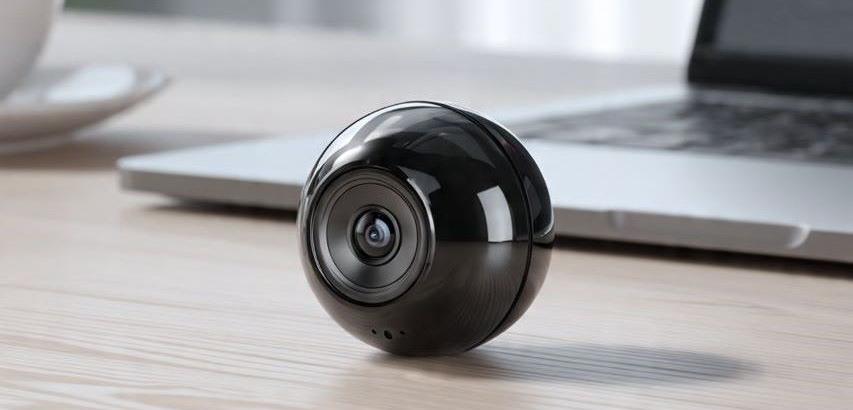A Mini Wireless Wi-Fi Camera is a compact, self-contained surveillance and recording device that connects to a local Wi-Fi network to transmit video and audio data. Its small form factor, ease of installation, and versatile functionality have made it immensely popular for both personal and professional security, as well as for a variety of unconventional uses.
Core Concept and How It Works
The fundamental operation involves capturing data and wirelessly transmitting it over a network.
Capture: A mini-image sensor (typically CMOS) captures video footage. A small microphone often captures audio.
Processing: An onboard processor compresses the video (using codecs like H.264 or H.265) to reduce file size for efficient streaming and storage.
Transmission: The camera connects to a 2.4GHz or dual-band (2.4GHz/5GHz) Wi-Fi network. Using standard networking protocols, it streams the compressed data.
Access & Storage:
Cloud Storage: The camera sends footage to a manufacturer's cloud server, accessible via a subscription plan.
Local Storage: The camera records to a microSD card inserted into it.
Network Storage: Some cameras can save footage to a Network Attached Storage (NAS) device on the same local network.
Viewing: Users access the live or recorded footage through a dedicated smartphone app, a web browser portal, or sometimes through third-party software that supports standards like ONVIF or RTSP.
Key Components and Features
Image Sensor and Lens:
Sensor Type: CMOS sensors are standard due to their small size, low cost, and power efficiency.
Resolution: Ranges from standard definition (720p) to Full HD (1080p), and increasingly to 2K (1440p) and 4K (2160p). Higher resolution provides clearer details but consumes more bandwidth and storage.
Lens: Fixed or varifocal lenses. Many have a wide-angle lens (e.g., 110-150 degrees) to cover a larger area, which can introduce a fisheye distortion.
Connectivity:
Wi-Fi: The primary connectivity method. Dual-band support is preferable for less interference.
Ethernet Port (on some models): Provides a wired connection option for a more stable and reliable network link.
Bluetooth: Sometimes used for initial, simplified setup (pairing the camera to the phone and Wi-Fi network).
Power:
USB Power: The most common method, using a standard 5V USB adapter and cable.
Battery: Rechargeable lithium-ion batteries allow for completely wireless and flexible placement but require periodic recharging.
Power-over-Ethernet (PoE): Rare in "mini" cameras, but available on some compact models, providing both power and data through a single Ethernet cable.
Intelligent Features:
Motion Detection & Alerts: Uses pixel analysis or a PIR (Passive Infrared) sensor to detect movement and send push notifications to your phone.
Night Vision: Achieved through infrared (IR) LEDs, providing monochrome (black and white) video in total darkness.
Two-Way Audio: A built-in speaker and microphone allow you to listen and talk through the camera.
Siren/Siren Alarm: Can trigger a loud audible alarm manually or automatically upon motion detection.
Person/Pet/Vehicle Detection: Advanced AI algorithms filter out irrelevant motion (like moving shadows) and only alert you for specific types of movement.
Physical Design:
Discreet Form Factor: Designed to be unobtrusive, often disguised as everyday objects (like clocks, smoke detectors, or chargers) for covert monitoring.
Magnetic Base: Allows for easy mounting on metal surfaces.
Weather Resistance (IP Rating): Some models have an IP65 or IP66 rating, making them suitable for outdoor use.
Types of Mini Wireless Wi-Fi Cameras
Indoor Nanny Cams: Disguised cameras for monitoring caregivers or home spaces.
Pet Cameras: Often with features like laser pointers or treat dispensers.
Outdoor Security Cameras: Compact, weatherproof models for porches, doorways, or backyards.
Body-Worn or Wearable Cameras: Used for personal security, vlogging, or hands-free recording.
Pan-Tilt-Zoom (PTZ) Cameras: Small cameras that can rotate and tilt remotely to cover a wider area.
Advantages and Benefits
Easy Installation & Placement: No complex wiring required. Can be placed anywhere within Wi-Fi range and near a power outlet (or run on battery).
Remote Access & Real-Time Alerts: Monitor your home, office, or pets from anywhere in the world with an internet connection.
Covert Surveillance: The small size and disguised designs allow for discreet monitoring.
Scalability: It's easy to add multiple cameras to a single system (via the app) to cover different angles and rooms.
Cost-Effective: Generally, more affordable than traditional, professionally installed CCTV systems.
Limitations and Important Considerations
Network Dependency: Performance is entirely dependent on the strength and stability of your Wi-Fi signal. A weak signal can cause lag, disconnections, or poor video quality.
Security & Privacy Risks: As IoT devices, these cameras can be vulnerable to hacking if not secured properly. Always use strong, unique passwords and enable two-factor authentication (2FA) if available.
Power Source: Unless battery-powered, they are not truly "wireless" and still require a power cable, which can limit placement options.
Limited Range: The operational range is confined to the Wi-Fi network's coverage area.
Subscription Costs: Access to advanced cloud features like continuous recording or extended video history often requires a monthly or annual subscription fee.
Data Usage: Continuous streaming, especially in high definition, can consume significant amounts of internet bandwidth.
Common Applications
Home Security: Monitoring front doors, living rooms, and backyards.
Pet Monitoring: Watching pets while away from home.
Child/Elderly Monitoring: Keeping an eye on children's rooms or elderly relatives.
Small Business Security: Securing retail shops, offices, or storage rooms.
Travel Security: A portable camera can be used to monitor a hotel room or temporary rental.
Vlogging & Content Creation: As a portable, high-quality camera for recording activities.
Mini Wireless Wi-Fi Cameras are a powerful and accessible piece of technology that democratizes security and remote monitoring. Their combination of compact design, intelligent features, and ease of use makes them suitable for a vast array of applications beyond traditional security. However, potential buyers must be mindful of their limitations, particularly their reliance on a stable Wi-Fi network and the critical importance of implementing robust security practices to protect their privacy and data. When selected and used correctly, they are an invaluable tool for providing peace of mind.
 |  |  |
 |  |  |
